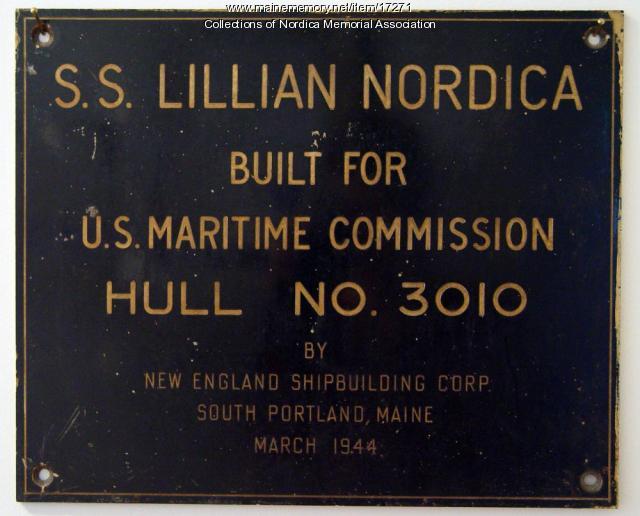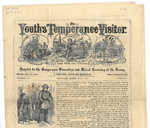Keywords: Somes
- Historical Items (1058)
- Tax Records (4)
- Architecture & Landscape (5)
- Online Exhibits (225)
- Site Pages (517)
- My Maine Stories (91)
- Lesson Plans (21)
Online Exhibits
Your results include these online exhibits. You also can view all of the site's exhibits, view a timeline of selected events in Maine History, and learn how to create your own exhibit. See featured exhibits or create your own exhibit
Exhibit
Many different types of trolley cars -- for different weather, different uses, and different locations -- were in use in Maine between 1895-1940. The "field guide" explains what each type looked like and how it was used.
Exhibit
Anglo-Americans in northern New England sometimes interpreted their own anxieties about the Wilderness, their faith, and their conflicts with Native Americans as signs that the Devil and his handmaidens, witches, were active in their midst.
Exhibit
Young men and women in the 19th century often went away from home -- sometimes for a few months, sometimes for longer periods -- to attend academies, seminaries, or schools run by individuals. While there, they wrote letters home, reporting on boarding arrangements and coursework undertaken, and inquired about the family at home.
Exhibit
South Portland's Wartime Shipbuilding
Two shipyards in South Portland, built quickly in 1941 to construct cargo ships for the British and Americans, produced nearly 270 ships in two and a half years. Many of those vessels bore the names of notable Mainers.
Exhibit
Camden has been home to generations of fishermen, shipbuilders, sailmakers, and others who make their living through the sea. The lives of two Camden sailmakers, who were born nearly a century apart, became entwined at a small house on Limerock Street.
Exhibit
The Doris Hamlin, a four-masted schooner built at the Frye-Flynn Shipyard in Harrington, was one of the last vessels launched there, marking the decline of a once vigorous shipbuilding industry in Washington County.
Exhibit
Rum, Riot, and Reform - Why Study the History of Drinking?
"Maine led the nation in the temperance fight; a look at its history might help put current issues in some perspective."
Exhibit
Rum, Riot, and Reform - The Continuing Debate
"still work to resolve some of its problems. In Maine, increased media attention, including a series of award-winning articles in the Portland Press…"
Exhibit
Music in Maine - Country Music
"What really captivated me were the stories told (some true, some as if they were true), the way they rhymed, and the way the music—often…"
Exhibit
Published women authors with ties to Maine are too numerous to count. They have made their marks in all types of literature.
Exhibit
San Life: the Western Maine Sanatorium, 1928-1929
Merle Wadleigh of Portland, who was in his mid 20s, took and saved photographs that provide a glimpse into the life of a tuberculosis patient at the Western Maine Sanatorium in Hebron in 1928-1929.
Exhibit
Independence and Challenges: The Life of Hannah Pierce
Hannah Pierce (1788-1873) of West Baldwin, who remained single, was the educated daughter of a moderately wealthy landowner and businessman. She stayed at the family farm throughout her life, operating the farm and her various investments -- always in close touch with her siblings.
Exhibit
Blueberries to Potatoes: Farming in Maine
Not part of the American "farm belt," Maine nonetheless has been known over the years for a few agricultural items, especially blueberries, sweet corn, potatoes, apples, chickens and dairy products.
Exhibit
Lt. Charles A. Garcelon, 16th Maine
The son of Maine's surgeon general and nephew of a captain in the 16th Maine, Charles A. Garcelon of Lewiston served in Co. I of the 16th Maine. His letters home in the first 17 months of his service express his reflections on war and his place in it.
Exhibit
History in Motion: The Era of the Electric Railways
Street railways, whether horse-drawn or electric, required the building of trestles and tracks. The new form of transportation aided industry, workers, vacationers, and other travelers.
Exhibit
At the heyday of trolleys in Maine, many of the trolley companies developed recreational facilities along or at the end of trolley lines as one further way to encourage ridership. The parks often had walking paths, dance pavilions, and various other entertainments. Cutting-edge technology came together with a thirst for adventure and forever changed social dynamics in the process.
Exhibit
KVVTI's Gilman Street Campus, 1978-1986
The Gilman Street building began its life in 1913 as Waterville High School, but served from 1978 to 1986 as the campus of Kennebec Valley Vocational Technical Institute. The building helped the school create a sense of community and an identity.
Exhibit
Rebecca Usher: 'To Succor the Suffering Soldiers'
Rebecca Usher of Hollis was 41 and single when she joined the Union nursing service at the U.S. General Hospital at Chester, Pennsylvania. Her time there and later at City Point, Virginia, were defining experiences of her life.
Exhibit
Maine's frozen rivers and lakes provided an economic opportunity. The state shipped thousands of tons of ice to ports along the East Coast and to the West Indies that workers had cut and packed in sawdust for shipment or later use.
Exhibit
Student Exhibit: Ice Harvesting
Ice Harvesting was a big industry on the Kennebec River. Several million tons of ice could be harvested in a few weeks. In 1886 the Kennebec River topped the million ton on ice production.
Exhibit
WWI Memorial Trees along Portland's Baxter Boulevard
On Memorial Day of 1920, the City of Portland planted 100 Linden trees on Forest Avenue, each dedicated to the memory of one military service member who had died in World War I, or who had served honorably.
Exhibit
Home: The Wadsworth-Longfellow House and Portland - Researching Your Home
"Check your county's Registry of Deeds office. Some counties have digitized records, which can be found on an online, searchable database."
Exhibit
Home: The Wadsworth-Longfellow House and Portland - The Privy
"Some houses were divided into apartments (or tenements), others were boarding houses where rooms were rented or shared."
Exhibit
Rum, Riot, and Reform - Temperance Membership
"Burden Collection Some temperance groups presented entertainment as a way of introducing their ideas to new followers."
























